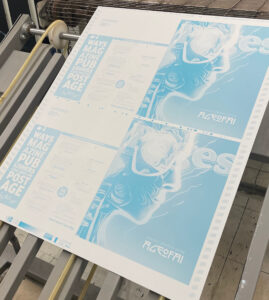

Pages Magazine Features Another Creative and Cost-Effective Cover Treatment
Here’s an inside look at how we achieved a three-dimensional effect.
By The Pages Team
The Spring/Summer 2024 issue of Pages is out, and we’re hoping our creative cover caught your attention. We used a simple and inexpensive printing technique to create a holographic or three-dimensional effect. Lines of binary code running across the cover appear to sit on top of and apart from the (AI-generated) illustration underneath it.
We achieved this effect using a “knockout;” matte varnish; and gloss paper. Here’s how.
The first step was to go back to our designer, Todd Verlander, to request that he enlarge the code in the original concept to give this technique maximum impact.
We then removed the binary code layer from the cover art file and set it as a black-and-white separation layer. With the binary code removed from the art, the code no longer prints using ink, but instead, is visible because the gloss paper shows through where the binary code is “knocked out” of the matte varnish (indicated by the “white” in the knockout layer). Using this technique, the varnish applies to the full surface of the sheet except where the binary code appears.
 In effect, the code appears to be a spot gloss on a matte background when actually it is the reverse: a spot matte with the gloss of the paper showing through in the knocked-out areas.
In effect, the code appears to be a spot gloss on a matte background when actually it is the reverse: a spot matte with the gloss of the paper showing through in the knocked-out areas.
Voila! A three-dimensional affect achieved in just one pass on press and with no need for a special-order plate.
We love experimenting with creative cover treatments, and we’re always ready to discuss ideas with our customers. If you want to try something out-of-the-box for an upcoming cover, reach out to your Customer Success Manager early in your design process, and let’s see what great things we can do together!

